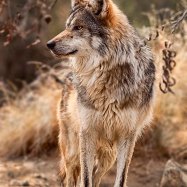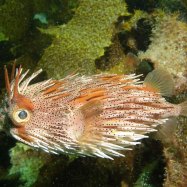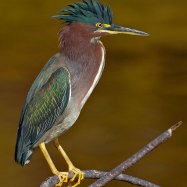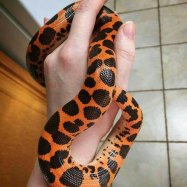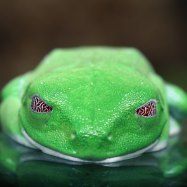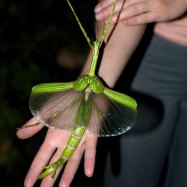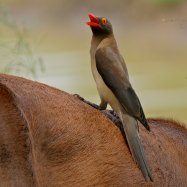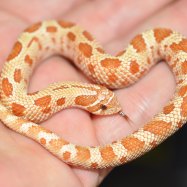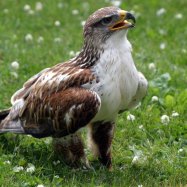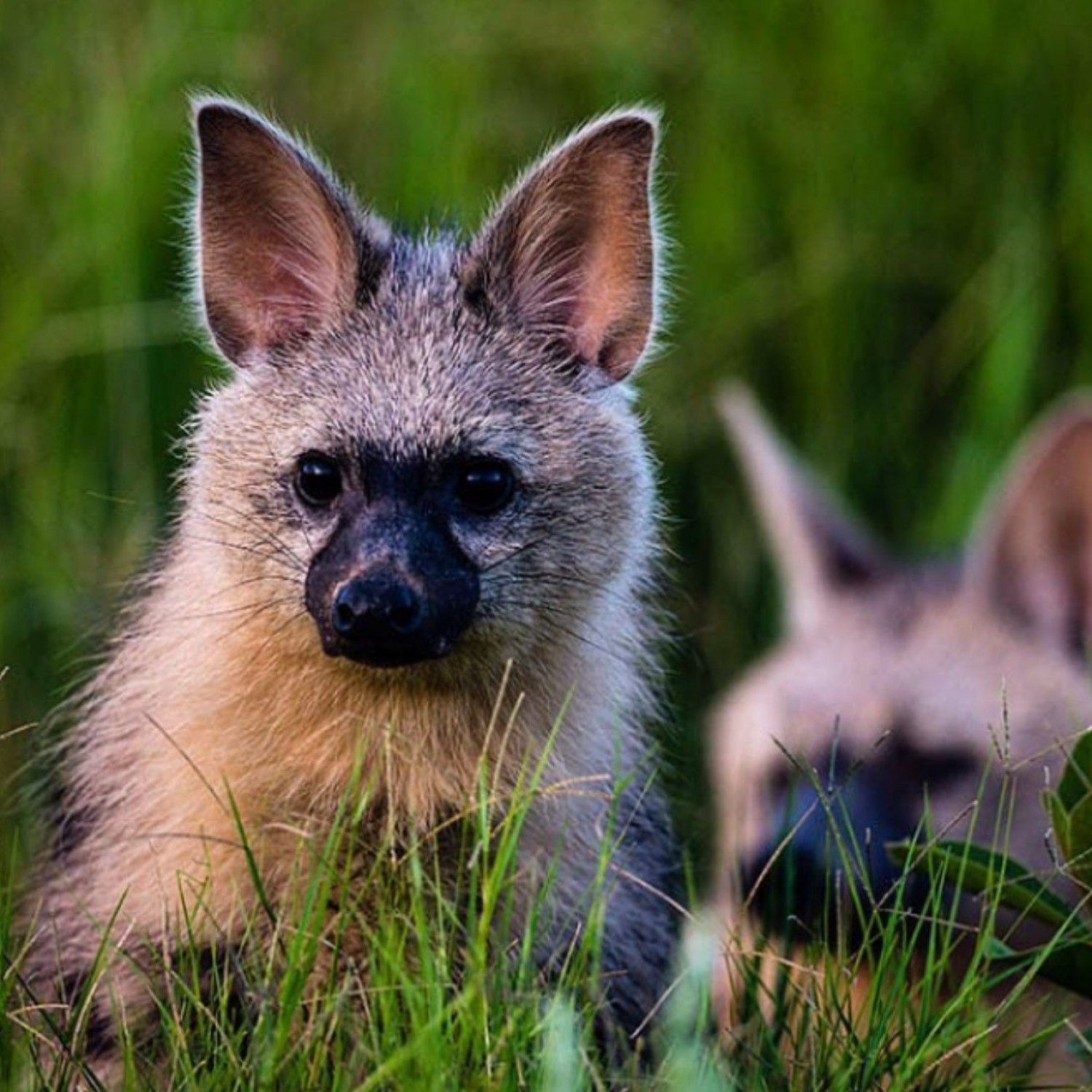
Aardwolf
Up to 33-46 inches (85-115 cm)
The aardwolf is a unique animal found in Southern Africa, including South Africa, Namibia, Botswana, and Zimbabwe. This slender creature belongs to the Hyaenidae family and can reach up to 33-46 inches in length. Despite its name, the aardwolf is not a wolf but a distinct species with a specialized diet of termites. Its small and slender body shape makes it perfectly adapted for its unique diet and lifestyle. So next time you're visiting South Africa, keep an eye out for this fascinating animal! #aardwolf #SouthAfrica #wildlife
Animal Details Summary:
Common Name: Aardwolf
Kingdom: Animalia
Habitat: Grasslands, open savannas, and bushland
The Adorable and Elusive Aardwolf: A Fascinating Creature from Eastern and Southern Africa
The animal kingdom is full of diverse and fascinating creatures, each with its unique characteristics and behaviors. One such creature is the aardwolf, a small and elusive mammal that can be found in the grasslands, open savannas, and bushlands of eastern and southern Africa. Despite its name, the aardwolf is not a wolf at all, but rather a member of the hyena family, Hyaenidae. So, let's dive deeper into this interesting creature and discover what makes it so special Aardwolf.The Science behind the Name
The aardwolf's scientific name is Proteles cristata, with Proteles meaning "complete in form" and cristata meaning "crested." Both of these words accurately describe the physical features of this animal. The aardwolf is also commonly known as the "earth wolf" due to its habit of living and foraging on the ground.A Family of Carnivores
The aardwolf belongs to the kingdom Animalia, phylum Chordata, and class Mammalia. It is a member of the order Carnivora, which includes animals such as cats, dogs, bears, and seals. However, unlike its carnivorous relatives, the aardwolf has evolved to become an insectivore, feeding almost exclusively on insects.A Unique Member of the Hyena Family
As mentioned earlier, the aardwolf is not a wolf but is rather a member of the hyena family, Hyaenidae. However, unlike its larger cousins, such as the spotted hyena and the striped hyena, the aardwolf does not have the typical hyena appearance. It has a slender body, short, pointed ears, and a long, bushy tail, making it look more like a fox American Pugabull. The aardwolf also lacks the powerful jaws and teeth that other hyenas possess, as it does not need them for hunting.Finding Aardwolves in the Wild
The aardwolf is found in eastern and southern Africa, particularly in countries like South Africa, Namibia, Botswana, and Zimbabwe. These animals are often solitary and elusive, making them challenging to spot in the wild. They are most active at night, using their keen sense of smell and powerful front claws to dig for their insect prey.The Perfect Diet for a Picky Eater
Unlike other hyena species, the aardwolf is an insectivore, meaning it feeds almost exclusively on insects. Its specialized diet includes termites, beetles, and grasshoppers. Interestingly, the aardwolf has a unique way of feeding – instead of chasing its prey, it locates termite nests and licks them with its long, sticky tongue, collecting hundreds of insects in one go. This behavior is also known as "ant-eating."A Perfectly Adapted Habitat
The aardwolf's habitat consists of grasslands, open savannas, and bushlands, where it can find an abundance of termites and other insects to feed on. These regions also provide the aardwolf with suitable shelters, such as burrows or thick vegetation, to hide in during the day.The Colorful Aardwolf
The aardwolf's fur is mostly yellowish-brown to reddish-brown, with dark stripes running down its back and legs. This unique coloration serves as camouflage, helping the animal blend into its surroundings and avoid potential predators.The Tiny Yet Mighty Body
Compared to other hyenas, the aardwolf is relatively small, measuring up to 33-46 inches (85-115 cm) in length and weighing between 20-33 pounds (9-15 kg). It has a small, flat skull and a slender body, making it well-suited for its insectivorous diet and nocturnal lifestyle.The Elusive Aardwolf
Due to their solitary and nocturnal nature, aardwolves are challenging to find in the wild. They are elusive creatures, known for their extensive range of vocalizations, including a distinct "chirping" sound to communicate with other aardwolves.A Species Worth Protecting
Aardwolves are not considered endangered, but their populations are considered declining due to habitat loss and persecution by farmers who view them as pests. However, aardwolves play an essential role in their ecosystems by controlling termite populations, which can cause extensive damage to crops and vegetation. It is crucial to preserve their habitats and raise awareness about this unique species to ensure their long-term survival.Conclusion
In conclusion, the aardwolf may not be as well-known as other African animals, but it is undoubtedly a fascinating creature. From its unique appearance and diet to its elusive nature and vital role in its ecosystem, the aardwolf has distinct characteristics that make it stand out in the animal kingdom. So, let's continue to admire and protect this adorable and elusive creature, the aardwolf.

Aardwolf
Animal Details Aardwolf - Scientific Name: Proteles cristata
- Category: Animals A
- Scientific Name: Proteles cristata
- Common Name: Aardwolf
- Kingdom: Animalia
- Phylum: Chordata
- Class: Mammalia
- Order: Carnivora
- Family: Hyaenidae
- Habitat: Grasslands, open savannas, and bushland
- Feeding Method: Insectivore
- Geographical Distribution: Eastern and Southern Africa
- Country of Origin: South Africa
- Location: South Africa, Namibia, Botswana, and Zimbabwe
- Animal Coloration: Yellowish-brown to reddish-brown
- Body Shape: Small and slender
- Length: Up to 33-46 inches (85-115 cm)
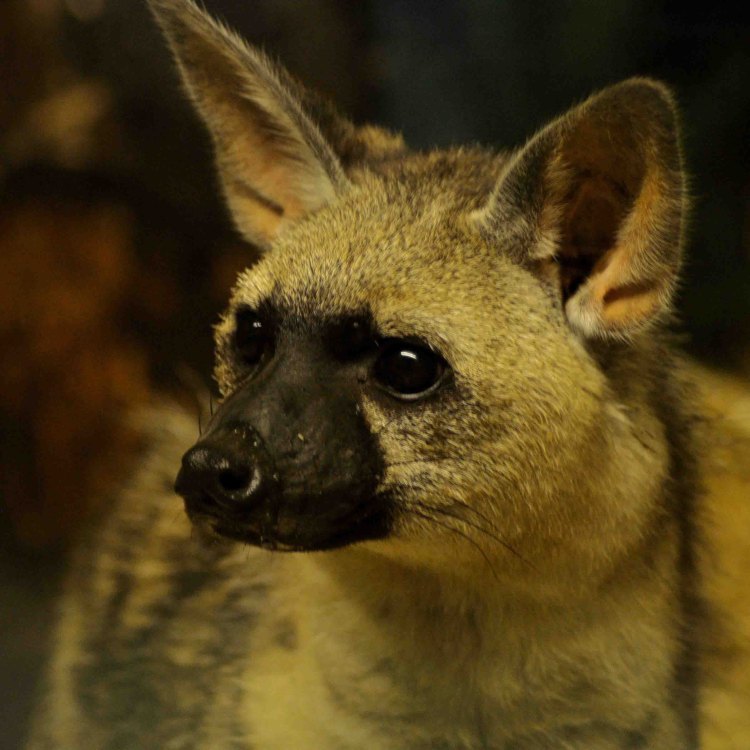
Aardwolf
- Adult Size: Height: 20-24 inches (50-60 cm), Weight: 17-26 pounds (8-12 kg)
- Average Lifespan: 7-12 years
- Reproduction: Monogamous
- Reproductive Behavior: Year-round
- Sound or Call: Soft purring and cackling sounds
- Migration Pattern: Non-migratory
- Social Groups: Solitary or form small family groups
- Behavior: Nocturnal
- Threats: Habitat loss and fragmentation, hunting, and poisoning
- Conservation Status: Least Concern
- Impact on Ecosystem: Control of insect populations
- Human Use: Tourism and research
- Distinctive Features: Mane of long, coarse hairs along the neck and back
- Interesting Facts: Aardwolves belong to the same family as hyenas, but they are considerably smaller and have different dietary habits.
- Predator: Lions, hyenas, and raptors

Proteles cristata
The Fascinating World of Aardwolves: An Insight into the Lesser-Known Hyena
When one imagines a hyena, the image that often comes to mind is the fierce, scavenging beast portrayed in popular media. However, there is a lesser-known member of the hyena family that does not quite fit this stereotype – the aardwolf. This unique creature is often overlooked and misunderstood, but it has a world of its own that is both fascinating and essential to the ecosystem.The aardwolf, also known by its scientific name Proteles cristata, is a small mammal native to the grasslands of eastern and southern Africa PeaceOfAnimals.Com. It falls under the same family, Hyaenidae, as its more well-known cousins, the hyenas. However, the aardwolf is considerably smaller and possesses several distinctive features that set it apart from the rest of the hyena family.
So what exactly makes the aardwolf so unique? Let's delve deeper into this elusive creature and discover the lesser-known aspects of its life, behavior, and impact on the environment.
Appearance and Physical Characteristics
The aardwolf is a medium-sized mammal, measuring around 20-24 inches (50-60 cm) in height and weighing between 17-26 pounds (8-12 kg). It has a slim and light build, with long, slender legs and a distinctive mane of long, coarse hairs along its neck and back. This mane, which resembles that of a miniature lion, is one of the most notable physical characteristics of the aardwolf.Its coat is mainly sandy or yellowish-brown in color, with vertical stripes on its neck and shoulders. This coloration serves as camouflage, helping the aardwolf blend into its surroundings while hunting. Its large eyes are set apart and are ideally adapted for its nocturnal lifestyle Aye Aye.
The aardwolf also has unique dental features, with large molars and small carnassial teeth. These teeth are specialized for grinding insects, as the aardwolf has a highly specific diet. Its long, sticky tongue helps it capture insects, while its strong jaws can crush the hard exoskeletons. In fact, the aardwolf has lost some of its teeth as a result of its highly adapted diet.
Biology and Life Cycle
On average, aardwolves have a lifespan of 7-12 years in the wild. They are monogamous and form pairs that mate for life. The reproductive behavior of aardwolves is year-round, with the birth of a single litter between December and August. The gestation period lasts for about 90 days, and the female gives birth to 2-5 cubs, which are blind and helpless at birth.The cubs are weaned after 3-4 months, and they reach sexual maturity at around 12-16 months. Aardwolves have a slow reproductive rate, with females producing only one litter per year, making them susceptible to population declines.
Unlike hyenas, aardwolves are solitary creatures or form small family groups consisting of a mated pair and their offspring. They do not form larger social packs like their counterparts, and they do not have a strict hierarchy within their groups.
Behavior and Habitat
Aardwolves are primarily nocturnal animals, meaning they are most active at night. This lifestyle is essential as a majority of their diet consists of insects, which are mainly active at night. They are seldom seen during the day, as they spend most of their time in their underground dens, dug by themselves or abandoned by other animals.Although they are generally solitary, aardwolves have been seen foraging in pairs, with one member sleeping while the other hunts. They communicate with each other through soft purring and cackling sounds, which can be heard during the courting and mating period.
Aardwolves are non-migratory animals and are mainly found in the open, arid regions of eastern and southern Africa. They prefer areas with sandy or loamy soils, where they can easily dig their dens. Aardwolves are highly adaptable creatures and can also be found in grasslands, savannas, and even abandoned agricultural lands.
Threats and Conservation Status
Like many other species, aardwolves face several threats in their natural habitat. The most significant threat to their population is habitat loss and fragmentation due to human activities such as agriculture, urbanization, and mining. This has caused a decline in their natural prey and has led to increased competition for food among individuals.Aardwolves are also hunted for their meat and body parts. However, unlike their larger cousins, hyenas, aardwolves have no cultural or traditional significance in the local communities, making them less affected by hunting. Another threat to their population is poisoning, either directly or indirectly through the consumption of poisoned prey.
Despite the various threats they face, aardwolves are currently classified as Least Concern on the International Union for Conservation of Nature (IUCN) Red List. However, there is a growing concern for their declining population, and efforts are being made to raise awareness and protect these unique creatures.
Role in the Ecosystem
Although they may seem like insignificant creatures, aardwolves play a crucial role in the ecosystem. One of their most important contributions is the control of insect populations, particularly termites. Aardwolves have a specialized diet, with termites making up 90% of their food intake. This makes them important contributors to the control of insect populations, helping to maintain ecological balance.They also provide a source of food for larger predators such as lions, hyenas, and even raptors. Their underground dens also serve as homes for other animals, such as ground squirrels, lizards, and mongooses. By digging their dens, aardwolves also aid in soil aeration and nutrient cycling, which has a positive impact on plant growth.
Human Use and Conservation Efforts
Aardwolves have been historically perceived as agricultural pests and were often killed by farmers. However, over time, the aardwolf's beneficial role in the ecosystem has been recognized, and they are now considered important contributors to the environment.Aardwolves are also a popular tourist attraction, as they can be seen in several national parks and game reserves in their natural habitat. Many tourists are amazed by these elusive creatures and are often surprised to learn that they belong to the same family as hyenas.
Efforts are also being made to conserve aardwolves and protect their population. One such effort is the establishment of conservation areas, such as the Aardwolf Protected Habitat in Ethiopia, which aims to protect the species and their habitats. Conservation organizations also work with local communities to raise awareness and promote sustainable practices to reduce threats to aardwolves.
Interesting Facts About Aardwolves
- Aardwolves belong to the same family as hyenas, but they are considerably smaller and have different dietary habits. They are more closely related to the mongoose family.- The name "aardwolf" is derived from the Afrikaans and Dutch words for "earth-wolf," referring to their habit of living and digging underground.
- Aardwolves are known for their unique method of capturing termites. They can consume up to 200,000 termites in a single night!
- Unlike their hyena counterparts, aardwolves do not have strong jaws and teeth, making them incapable of cracking bones or scavenging carcasses.
- They have a symbiotic relationship with certain bird species, such as the pale chanting goshawk and the gabar goshawk. These birds of prey often share the aardwolf's underground dens and feed on any leftovers from their meals.
In Conclusion
The aardwolf may not be as well-known as its larger and more popular hyena family members, but it is undoubtedly a fascinating and essential creature in its own right. Its unique physical features, behavior, and role in the ecosystem make it a valuable and irreplaceable species.Despite the various threats it faces, efforts are being made to conserve and protect the aardwolf. Through awareness and sustainable practices, we can ensure the survival of this lesser-known hyena and appreciate its contribution to the environment. So the next time you hear a soft purring or cackling sound in the African grasslands, you might just have a glimpse into the elusive world of aardwolves.
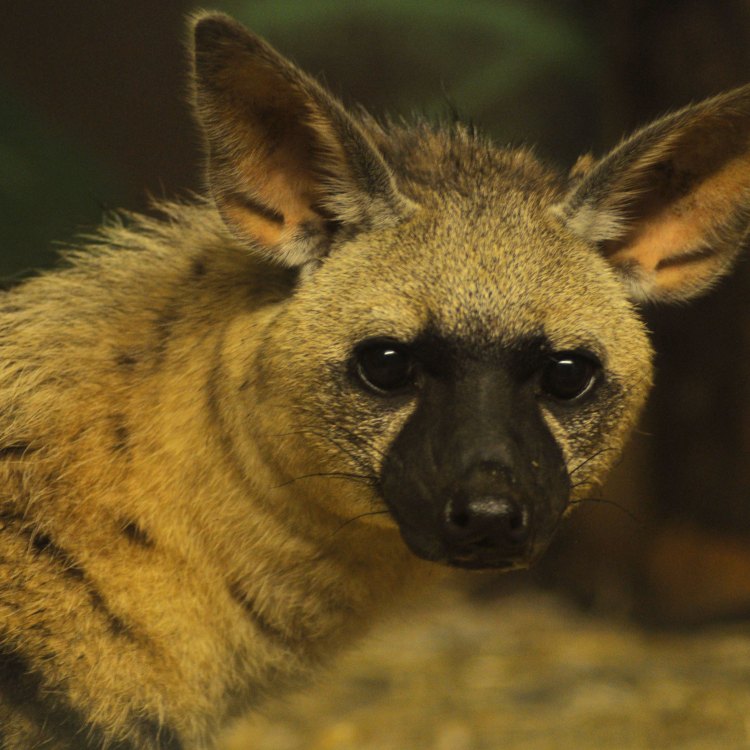
The Adorable and Elusive Aardwolf: A Fascinating Creature from Eastern and Southern Africa
Disclaimer: The content provided is for informational purposes only. We cannot guarantee the accuracy of the information on this page 100%. All information provided here may change without prior notice.

